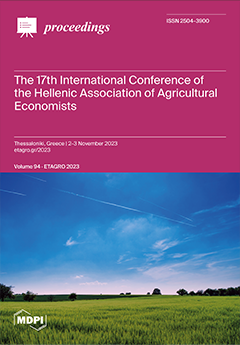Open AccessProceeding Paper
Development of A Non-Invasive System for the Automatic Detection of Cattle Lameness
by
George Bellis, Paris Papaggelos, Evangeli Vlachogianni, Ilias Laleas, Stefanos Moustos, Thanos Patas, Sokratis Poulios, Nikos Tzioumakis, Giannis Giakas, Giorgos Tsiogkas, Christos Kokkotis and Dimitrios Tsaopoulos
Viewed by 820
Abstract
Lameness is a crucial welfare issue in the modern dairy cattle industry, that if not identified and treated early causes losses in milk production and leads to early culling of animals. At present, the most common methods used for lameness detection and assessment
[...] Read more.
Lameness is a crucial welfare issue in the modern dairy cattle industry, that if not identified and treated early causes losses in milk production and leads to early culling of animals. At present, the most common methods used for lameness detection and assessment are various visual locomotion scoring systems, which are labour-intensive, and the results may be subjective. The purpose of this project is to develop an integrated system for early detection of lameness in cattle, using force plate gait analysis and pattern recognition techniques to identify changes in gait which indicate the onset of lameness. The system will be tested on the natural onset of lameness in an organised farm environment.
Full article
►▼
Show Figures



